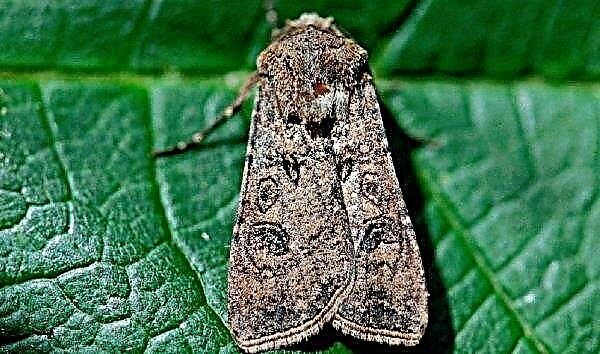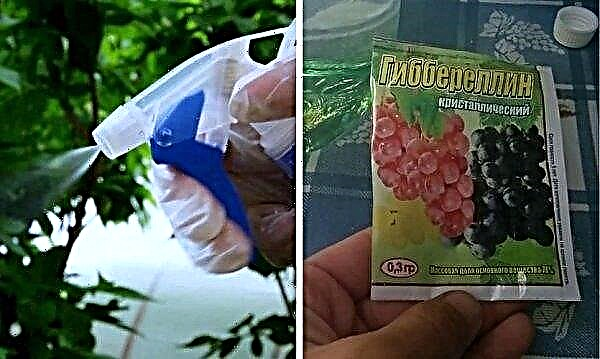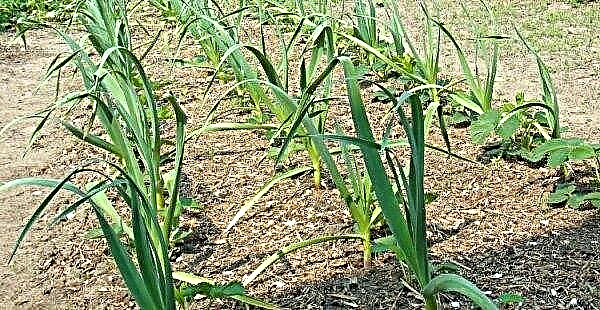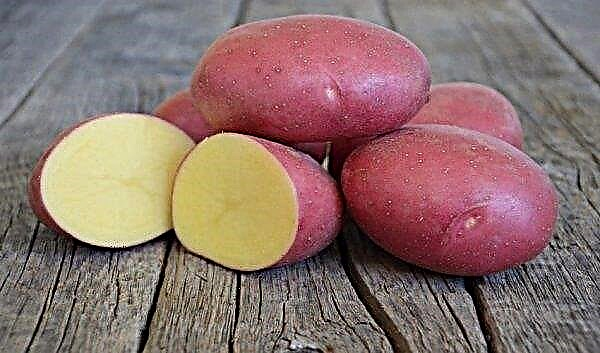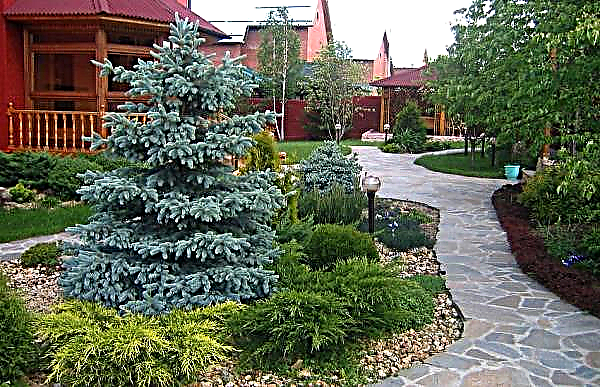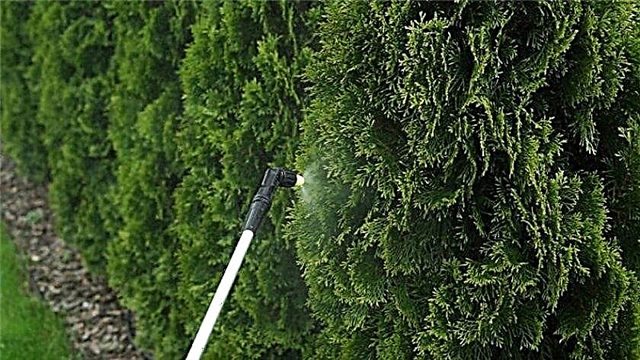The appearance of dark spots on the leaves or stalks of tomatoes is always a cause for alarm. However, the difficulty lies in the fact that such a symptom can be caused by various reasons, moreover, it is not always possible to accurately determine even the nature of the pathogen, that is, to understand whether it is an attack of an insect pest, the development of a fungal infection, the action of a bacterium or virus. How to be in a situation where it is not entirely clear what exactly is happening with the culture, and how it will affect the future harvest - the information collected in this review will help to understand.
Features of growing tomatoes
Since darkening of the leaves clearly indicates that something is hindering the development of the plant, let's start with the conditions that tomatoes need to be created to make them feel comfortable. Despite the fact that there are an incredible number of varieties and hybrids of this vegetable, in general, all of them present approximately the same requirements for the external environment. For clarity, we present these requirements in the form of a table:
| Soil acidity | Neutral: pH 6.5-7 |
| Soil composition | Lightweight with high permeability of water and air |
| Illumination | Very high, 20–35 thousand lux (the more sun, the faster the fruits will ripen) |
| Minimum daylight hours | 12 hours, for the formation of fruits - 14-18 hours |
| Soil moisture | 70–80 % |
| Watering | Abundant and uniform, as the topsoil dries, only under the root, the water should not be cold. During fruiting, watering intensity increases |
| Optimum temperature | 20–25 ° С (on the soil surface) |
| Critical temperature minimum | 1-3 ° C |
| Critical temperature maximum | 33–35 ° C |
| Mineral Feeding | In the seedling period - phosphorus and potassium, after planting in open ground - nitrogen, during the fruiting period - phosphorus, potassium, magnesium |
Did you know? Tomatoes have many useful properties: they increase hemoglobin, bind free radicals, preventing the development of cardiovascular and oncological diseases, increase intestinal motility, remove “bad” cholesterol, have a diuretic and choleretic effect. However, in order for the vegetable to work as a medicine, it must be eaten without bread and better in the afternoon.
Why did black spots appear on the tomatoes and what should I do?
The first thing a gardener needs to do when he noticed a darkening on the green organs of tomatoes is to try to establish the cause of the problem, since the algorithm for further actions will depend on this.

Fungal diseases
The most likely cause of the appearance of dark spots on the leaves, and sometimes on the stem of a tomato, is a fungal disease. There are quite a lot of them, so we will consider only the most common and dangerous ones.
Alternariosis
Alternariosis (the second name is zonal, or dry spotting), unfortunately, is a very frequent "guest" in the garden, and it affects not only tomatoes, but also other vegetables, as well as fruit trees and flowers. The disease is caused by spore-forming molds.
Important! If timely measures are not taken, alternariosis can easily lead to the loss of half the crop.
The following symptoms will help distinguish the disease from other infections:
- The defeat usually begins with the lower branches and gradually moves up.
- The spread of the disease can be observed on all parts of the bush located above the surface of the earth - the trunk, leaves, buds, petioles and fruits.
- Tomatoes grown in the greenhouse suffer from the fungus more often than those grown outdoors.
- At the first stages of the disease, white rounded spots appear on the leaves, reaching about 0.7 cm in diameter. Subsequently, the spots change shape to elongated, merging with each other and capturing almost the entire leaf plate.
- Alternaria on the leaves acquires a dark color only at high humidity.
- The vital activity of the fungal spores on the stalks of tomato is characterized by the appearance of a plaque, similar to velvet, with a clear border. On the cuttings you can notice spots in the form of rings.
- Affected leaves and stems dry, then die off and break off.
- The fruits of a tomato infected with alternariosis usually have black necrotic patches, as if pressed into the pulp. When cutting such a tomato, it is clear that the lesion penetrated inside, to the very bones.
- New fruits in a diseased bush either do not have time to form due to drying ovaries, or form very small, but even in this case it is undesirable to eat them.
The main marker that allows us to clearly recognize Alternaria is that this infection, unlike other fungal diseases, causes the branches and leaves to dry, irrespective of the abundance of watering, and the defeat begins with the appearance on the lower branches of round, clearly defined spots throughout the leaf plate.
 Mushrooms of the genus Alternaria
Mushrooms of the genus Alternaria
It is almost impossible to protect your site from alternariosis, since the spores of the fungi that cause the disease can be brought into the garden by wind or rain. Also carriers of infection are insects and birds. Most often, infection occurs when creating favorable weather conditions for the development of spores, namely with short rains falling on dry days, as well as abundant dew in the morning. Mushrooms feel good when the soil under the bush is dry and the leaf, on the contrary, is wet.
Important! The incubation period for alternariosis is from 4 to 5 days. If during this period of time, having noticed the first spots on the lower leaves, measures are not taken, the disease will spread very quickly.
Scientists were unable to develop a single tomato variety or hybrid that would be absolutely resistant to the disease, the maximum that can be said is relative immunity. However, it is proved that late-ripening types of culture are subject to dry spotting to a lesser extent than early and early ones.
In addition, the disease poses an increased danger to shrubs that are damaged or growing in poor, poorly fertilized soil (in particular, it is noted that with a lack of nitrogen in the ground, the plant is affected more often by alternariosis).

Among fungicidal preparations that have shown good efficacy against the disease, one can name the following:
- "Quadrice";
- "Infinity";
- "Ridomil Gold MC";
- "Ordan";
- "Acrobat";
- "Flint";
- "Antracol 70 WG";
- "Profit Gold" ";
- "Ditan M-45."
A proven folk remedy for dry spotting is Bordeaux liquid - a mixture of quicklime and copper sulphate.
Video: Making Bordeaux fluid
As a general rule, bed cultivation should be carried out 3-4 times with a 2-week break. However, you should always carefully study the instructions of the purchased drug, since each remedy may have its own characteristics for use.
Macrosporiosis
Macrosporiosis is a fungal disease that is so similar to alternariosis that many directories treat these infections as the same disease. The causative agents of macrosporiosis are fungal fungi Macrosporium solani Ellis & amp; G. Martin, close relatives of Alternaria.

Perhaps the only sign that allows one to visually distinguish macrosporiosis from alternariosis is the presence of separate zones with a maximum concentration of spots on the leaves affected by macrosporium.
It is known that macrosporiosis is able to affect the bush with a much smaller number of spores than is typical for alternariosis (about 1-2 thousand versus more than 40 thousand). This means that the incubation period for macrosporiosis is shorter, usually it is from 3 to 4 days. However, after the disputes have accumulated in the required volume, both diseases begin to progress very quickly.
Another distinctive feature of macrosporiosis is that its pathogen feels better at lower temperatures: Alternaria reproduce more actively in the range from 22 to 26 ° C, and Macrosporium - at 18–22 ° C.
Did you know? In 1893, a trial of ... tomato took place in the USA. The disputing parties (one of them was the tax authority, the other was a commercial structure) could not agree on whether this plant is a vegetable or fruit. The fiscal service (with which the Supreme Court did not agree) insisted on the latter, since the import duty on fruits in the country was higher.
In general, it would be correct to say that macrosporiosis and alternariosis are varieties of dry spotted tomatoes that differ from each other only in the exact name of the pathogen. By and large, there is no need for the gardener to determine what type of mushroom caused the lesion, since the treatment methods in both cases are exactly the same.
Olive spotting
The scientific name for this disease is cladosporiosis, also called brown spotting. The causative agent of the infection is Cladosporium fulvum Cooke fungi, which are distinguished by simply unique survival. A pathogen can go without a power source for months, while neither drought nor negative temperatures can destroy it.

Characteristic symptoms of cladosporiosis:
- The disease begins in the initial phase of flowering with the appearance of small, round, light green or brown spots on the back of the leaf plate.
- Later, spots also begin to cover the outside of the sheet, staining with a brown color.
- In the following stages, spots are covered with a coating that is similar in structure to velvet.
- The defeat moves up from the bottom of the bush, accompanied by a gradual darkening of the leaves.
- Infected leaves curl, dry out and fall off.
- The bush slows down growth.
- The ovaries are extremely rare.
- The fruits, remaining apparently intact, form very slowly and turn red badly. In rare cases, very young tomatoes wrinkle, darken and dry out.
Important! The best way to slow down brown spotting is to reduce air humidity. In greenhouses, this is provided by ventilation, and in open ground, at least, stop watering the tomatoes over the leaves.
The causative agent of brown spotting is easily tolerated by wind, rain, irrigation water, insects, birds and people, but the defeat begins only when favorable conditions for the fungus occur. These include high temperature (more than 25 ° C) and humidity (above 80%). Cladosporiosis spreads very quickly: after hitting one plant, it will soon capture the entire garden, so sometimes it’s better to simply remove the diseased bush.
Most modern varieties and hybrids are highly resistant to the disease, but gardeners who prefer to grow well-known tomatoes often encounter this problem.

To combat cladosporiosis, fungicidal drugs are used, among which high efficacy is shown by such as Bravo, Abiga-Peak, HOM, Poliram and Neo Tech.
You can prepare the sprayer yourself by mixing 1 tablespoon of polycarbacin and copper sulfate in 1 bucket of water, as well as 3 tablespoons of colloidal sulfur. To make the drug better stay on the leaves, you need to add some soap (household or liquid) to the bucket.
There are also folk remedies to combat brown spotting on tomatoes. Here are the 2 most popular ones:
- Dissolve 1 liter of fresh cow's milk and a tablespoon of iodine in 1 bucket of warm water.
- Dissolve 300 g of crushed wood ash in a small amount of water. Bring the resulting mixture to a boil and then simmer over low heat for 20 minutes. Dilute the finished concentrate with warm water to 10 liters.
Processing is carried out in the morning or evening, very plentiful, with special attention to be paid to the back of the sheet. After 2 weeks, if necessary, repeat the procedure.
Askohit
This fungal infection is also known as stem cancer. Its pathogen belongs to the genus Ascochyta lycopersici.

Distinctive signs of infection:
- Frequent appearance on young plants (seedlings - literally from the moment of germination).
- The defeat begins with the stem and internodes, but subsequently also spreads to other aerial parts of the bush, including the fruits.
- The cotyledon leaves turn yellow and look as if they were burned by the sun.
- Dark, depressed and moist (as if rotting) spots appear on the affected areas, which gradually increase in size.
- Over time, the affected areas become gray, and black points can be seen in the light background - this is the fruiting bodies of the fungus.
- The fruits are wrinkled, as if they were dipped in boiling water, then they turn black, dry and fall off.
Did you know? Until the beginning of the 19th century, tomatoes were considered poisonous and grown exclusively as an ornamental crop. The end of this error in 1822 was put by a retired American colonel named Robert Gibbon Johnson. Directly under the windows of the Salem County Court (New Jersey) and in front of an amazed audience, this man ate a whole bucket of tomatoes and, contrary to expectations, remained safe and sound.
Among the factors contributing to the spread of the disease, it is worth mentioning:
- high air humidity at not very high temperature (+ 20–25 ° С);
- sudden changes in temperature;
- excessive watering;
- the presence of broken branches and other injuries in the bush (including those caused by improper pinching);
- weakening of tomatoes by insects and other diseases;
- violation of the planting scheme, too small distance between the bushes;
- excess nitrates in the soil.

The following drugs are used to treat ascochitosis of tomatoes:
- "Agat-25";
- "Garden Rescuer";
- "Immunocytophyte";
- Bordeaux MK;
- "Profit Gold";
- "Ridomil Gold."
Folk remedies for the fight against the disease include primarily Bordeaux mixture, as well as colloidal sulfur.
Bacterial diseases
Among bacterial infections, from which tomatoes most often suffer and which may be accompanied by the appearance of dark spots on leaves and other aerial parts of the bush, the following should be mentioned:
- bacterial spotting (pathogen - Pseudomonas syringae);
- bacterial cancer (Clavibacter michiganensis);
- bacterial wilt (Pseudomonas solanacearum);
- stem necrosis (Pseudomonas corrugata);
- black bacterial spotting of tomato (Xanthomonas vesicatoria).

Depending on the type of disease, it can manifest itself in different ways, for example:
- Bacterial spotting primarily affects leaves. Small, 2-3 mm, brown spots of an oily texture appear on them, which gradually darken, after which after some time the sheet folds and disappears.
- Bacterial cancer begins with leaves, but then infects the entire plant. A characteristic feature is the numerous brown growths on the leaves and stems, white spots on the fruits, the trunk on the cut becomes yellow.
- With bacterial wilting, the bush wilts and dries right before your eyes, and intensive watering does not save the situation.
- Necrosis of the stem is characterized by the appearance of brown spots on the trunk, which gradually increase, as a result of which the stem cracks and the plant dies.
- Black bacterial spotting affects all terrestrial parts of the plant and manifests itself in the appearance of numerous spots on them, gradually darkening and increasing in size.
Important! Folk remedies cannot cure a bacterial infection.
A characteristic distinguishing feature of a bacterial infection from a fungal infection is that it often affects an adult plant, more precisely, only at this stage the disease can be visually detected. Most bacteria cause rot-like symptoms on tomato organs. The lower leaves under the influence of the pathogen often turn yellow, lose their softness and then die.
Weak bacteria are primarily susceptible to weakened plants grown in violation of agricultural practices.

For different types of diseases, there are peculiarities of treatment, but in most cases, you need to act as follows:
- The affected plant is subject to destruction.
- The remaining bed is treated with special preparations containing copper (these include, for example, copper sulfate, Bordeaux mixture, copper oxychloride). Very effective in the fight against most bacterial infections is a product called Phytolavin-300, Kartotsid and Planriz are also sometimes used.
- In addition, measures should be taken to reduce air humidity, because in such an environment bacteria multiply especially intensively.
Other reasons
Unfortunately, the possible diseases caused by dark spots on tomato leaves are not limited to the above diseases. This symptom can be caused by other factors.
Among the unnamed fungal infections affecting the stems, leaves and fruits of tomatoes, you can also mention:
- late blight;
- Septoria (white spotting);
- gray rot;
- root rot ("black leg");
- anthracnose;
- fusarium wilt;
- verticillosis;
- rust of leaves.
Did you know? The tobacco mosaic virus is the first representative of this unique type of pathogen discovered by humanity. In 1892, the Russian microbiologist D.I. Ivanovsky proved that a characteristic disease of tomatoes is caused by a certain substance, which neither in size nor in other characteristics can be attributed to bacteria.
The following category of possible causes is viral diseases, in particular:
- aspermia;
- bushiness of the apex;
- Bronze
- yellow curly;
- phytoplasmosis (columnar);
- mosaic.

Finally, the characteristic symptoms on the leaves can be caused by noncommunicable diseases, that is, they are a direct and immediate symptom of improper care.
For instance:
- With a deficiency of calcium and other elements in the soil, as well as genetic disorders in tomatoes (especially large-fruited), a special disease appears - apical decay. In this case, only the top of the bush becomes brown.
- Yellow-brown spots on the edges of the leaves and their subsequent twisting and drying are a sign of a lack of potassium.
- Spots on the leaves, similar to foci of rot, occur if the plant lacks potassium and iron.
- Yellowed leaves indicate nitrogen deficiency. Blue, subsequently blackening - about the lack of phosphorus.
- Necrotic areas on the leaves indicate the need to enrich the soil with magnesium.
- Purple or gray coating on the green parts of the bush usually indicates pesticide poisoning of the soil. Although the same effect can occur with a sharp decrease in air temperature.
What are dangerous diseases and what may be the consequences
Regardless of what exactly causes the appearance of dark spots on the leaves of tomatoes, this state of affairs cannot be ignored. Even if the disease does not affect the fetus, it will still negatively affect the size of the crop.
Important! The loss of leaves slows down photosynthesis, and this process is an integral component in the formation of fruits.
In addition, many tomato diseases are accompanied by the release of toxins that enter the fruits and make them unsuitable for consumption. Very often, pathogens enter tomato seeds, as a result they lose their germination capacity or form seedlings that are not viable or affected by the disease.
Finally, the causative agents of the disease - bacteria, viruses and fungi - multiplying uncontrollably, can soon spread to the entire site and even capture neighboring ones.
Preventative measures
Not all tomato diseases can be cured, but even those that respond to effective treatment are much better prevented. Indeed, the use of most fungicidal and bactericidal preparations in a short period of tomato vegetation cannot be called a safe procedure, and during fruiting such events are all the more undesirable.

So that pathogens do not affect the bushes, and the leaves and stems of tomatoes always remain fresh and green, the following preventive measures must be observed:
- Carefully collect all plant residues from the beds at the end of the season (immediately after harvest).
- Adhere to the established crop rotation rules (do not plant the same or related crops in one place for several years, competently alternate plants in the beds).
- To carry out disinfecting soil treatment in the fall after harvesting and in the spring before planting seedlings.
- To enrich the soil with the necessary minerals in the required proportion, to prevent either a deficit or a supersaturation of the earth with one or another element.
- To add organic fertilizers to the soil annually.
- Use those varieties and hybrids of tomatoes that are characterized by maximum resistance to most diseases and pests.
- Disinfect seeds before sowing. An exception is expensive hybrids in which such a procedure is performed by the manufacturer.
- Avoid surface irrigation of tomato bushes, as well as stagnation of water in the soil.
- Reduce watering during the cold season.
- Remove leaves at the bottom of the bush, as well as dried and dead fragments.
- Regularly weed the weed beds or use soil mulching.
- Use green manure between planting crops.
- Avoid contact of leaves and fruits with soil (follow recommendations for garter of tomatoes).
- If signs of serious infection are detected, destroy the affected plant immediately, do not use it for compost, but take it out of the area or burn it.
- Fruits from tomatoes that started to hurt should be harvested unripe until the disease touches them (after lying in the heat for a while, they will ripen and take on color).
- When growing tomatoes in greenhouses - regularly ventilate the greenhouses.
The appearance of dark spots on tomato leaves is a very common problem. It can be caused both by the development of the disease (fungal, bacterial or viral), and a violation of the agrotechnical conditions that this culture requires. Determining the specific cause of the pathology can be quite difficult, but you should try to do it, because the size of the crop depends on how fast and correct the farmer’s reaction is, not only this year, but, most likely, in subsequent ones.


